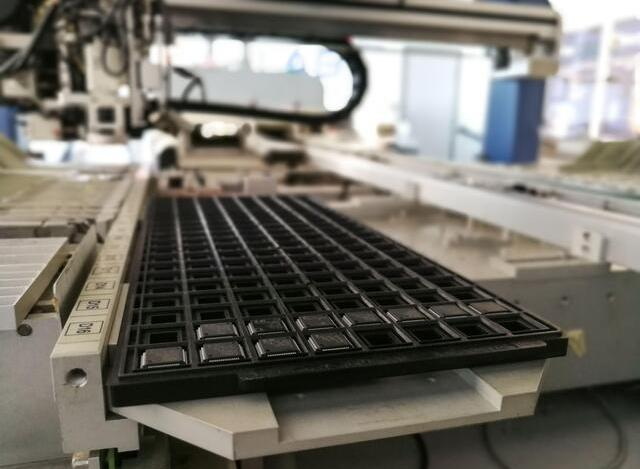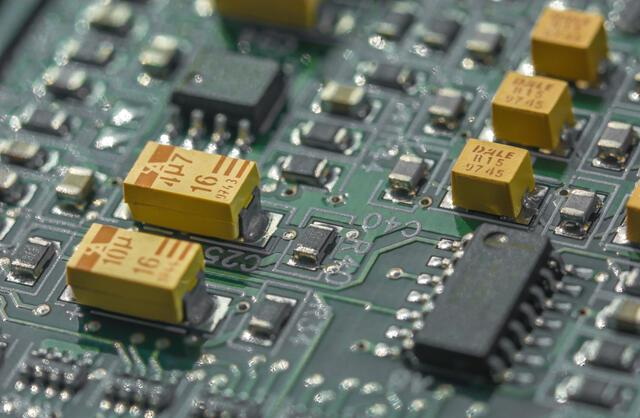Content Menu
● Understanding SMT Stencils and Their Role in Electronics Manufacturing
● What is Nano Coating Liquid?
● How Nano Coating Liquid Reduces Defects in SMT Stencils
>> 1. Enhanced Durability and Longevity
>> 2. Reduced Adhesion of Solder Paste
>> 3. Prevention of Flux Contamination
>> 4. Improved Solder Paste Release
>> 5. Resistance to Corrosion and Environmental Factors
● Conclusion
● Questions and Answers
>> 1. What are the main benefits of using nano coating liquids on SMT stencils?
>> 2. How does nano coating improve solder paste release?
>> 3. Can nano coating liquids prevent corrosion on SMT stencils?
>> 4. How often should nano coating be reapplied to SMT stencils?
>> 5. Are there any downsides to using nano coating on SMT stencils?
In the world of surface-mount technology (SMT), the precision of components placement is paramount. SMT stencils are used to apply solder paste to circuit boards with utmost accuracy. However, like all precision equipment, SMT stencils are susceptible to wear, corrosion, and defects, which can compromise the quality of the assembled electronics. To mitigate these issues, various methods have been developed to enhance the performance and lifespan of SMT stencils. One of the most promising solutions is the use of nano coating liquids. But can nano coating liquid truly reduce defects in SMT stencils? This article will explore this question in detail, examining the benefits of nano coating for SMT stencils and the role it plays in improving overall soldering performance.

Understanding SMT Stencils and Their Role in Electronics Manufacturing
SMT stencils are thin metal sheets or frames with precise cutouts that are used to transfer solder paste onto a printed circuit board (PCB). These stencils play a critical role in the assembly process of electronic devices, ensuring that the solder paste is applied in the right amounts and in the right locations. The quality of the solder paste application directly impacts the performance and reliability of the final product.
The stencils are typically made of stainless steel, and they are subjected to various stresses during the manufacturing process. These include physical wear from the repeated application of solder paste, as well as the corrosive effects of flux and solder materials. Over time, this wear and corrosion can lead to the development of defects, such as blocked apertures, uneven paste distribution, or poor soldering. These defects not only increase the risk of faulty components but also reduce the overall efficiency of the production line.
What is Nano Coating Liquid?
Nano coating liquids are innovative substances that contain nanoparticles designed to form a thin, durable layer on the surface of materials. These coatings provide enhanced properties, such as resistance to corrosion, wear, and contamination. In the context of SMT stencils, nano coating liquids are applied to the surface of the stencil to create a protective barrier. This barrier helps to reduce the wear and tear caused by the repeated use of the stencils in the manufacturing process.
Nano coatings are made from advanced materials, including polymers, ceramics, and metals, that have been engineered at the nanometer scale. The coating is typically transparent, allowing the stencil's apertures to remain visible and functional while offering protection against environmental factors. The coating can also improve the flow of solder paste, prevent clogging, and reduce the buildup of unwanted residues.

How Nano Coating Liquid Reduces Defects in SMT Stencils
1. Enhanced Durability and Longevity
One of the most significant advantages of using nano coating liquids on SMT stencils is their ability to extend the lifespan of the stencils. The nano coating acts as a protective layer, shielding the stencil from physical damage, corrosion, and wear. As the stencil is repeatedly used in the manufacturing process, the coating helps prevent abrasive forces from wearing down the material, keeping the stencil in better condition for a longer period.
This increased durability leads to fewer stencil replacements, reducing downtime and lowering maintenance costs. Stencils that retain their shape and integrity are more likely to produce accurate, defect-free solder paste applications, leading to better overall performance in the manufacturing process.
2. Reduced Adhesion of Solder Paste
Another key benefit of nano coating liquids is their ability to reduce the adhesion of solder paste to the stencil surface. Solder paste is a sticky substance, and over time, it can accumulate on the stencil, particularly around the apertures. This buildup can lead to uneven paste deposition, which causes defects such as bridging, tombstoning, or insufficient solder joints.
Nano coatings create a smoother, more hydrophobic surface, which makes it harder for the solder paste to stick. As a result, the paste is more easily released from the stencil, leading to cleaner, more consistent paste deposition. This reduces the likelihood of defects and improves the overall quality of the soldering process.
3. Prevention of Flux Contamination
Flux residues from solder paste can also accumulate on the stencil, contributing to contamination and corrosion. These residues can cause poor soldering results and lead to defects in the final assembly. Nano coatings, with their smooth and non-stick properties, help prevent flux and other contaminants from adhering to the stencil surface.
By preventing the buildup of flux residues, nano coatings help maintain the cleanliness of the stencil, reducing the need for frequent cleaning and ensuring that the stencil continues to perform at a high level. This cleanliness is essential for achieving accurate, high-quality solder paste deposition, which ultimately leads to fewer defects in the finished product.
4. Improved Solder Paste Release
The process of applying solder paste to a PCB is delicate and requires precise control to ensure that the right amount of paste is deposited in the correct locations. If the stencil has a rough or damaged surface, the solder paste may not be released uniformly, leading to defects such as solder balls, insufficient soldering, or inconsistent connections.
Nano coatings improve the release properties of SMT stencils, allowing for more consistent and controlled paste deposition. The coating reduces friction between the paste and the stencil, ensuring that the paste is released smoothly and evenly. This results in more uniform solder joints and fewer defects, improving the overall reliability of the assembled PCB.
5. Resistance to Corrosion and Environmental Factors
SMT stencils are often exposed to harsh environmental conditions, such as high humidity, temperature fluctuations, and chemical exposure from flux and soldering materials. Over time, these factors can cause the stencil material to corrode, leading to defects in the paste deposition process.
Nano coatings provide a protective barrier that resists corrosion and other environmental stresses. The coating prevents moisture, chemicals, and contaminants from penetrating the stencil material, preserving its integrity and ensuring consistent performance. This resistance to corrosion is particularly important in industries where stencils are used in high-volume production runs or in harsh operating environments.
Conclusion
In conclusion, nano coating liquids offer significant advantages in reducing defects in SMT stencils. These coatings enhance the durability of the stencils, reduce the adhesion of solder paste, prevent flux contamination, improve solder paste release, and provide resistance to corrosion and environmental factors. As a result, the use of nano coatings can improve the overall quality and reliability of the soldering process, leading to fewer defects in the finished product and increased efficiency in the manufacturing process.
As the electronics manufacturing industry continues to evolve, the use of advanced materials like nano coatings will likely become even more widespread. Manufacturers looking to improve the quality of their products and optimize their production lines should consider adopting nano coating liquids for their SMT stencils.

Questions and Answers
1. What are the main benefits of using nano coating liquids on SMT stencils?
Nano coating liquids offer several key benefits, including enhanced durability, reduced adhesion of solder paste, prevention of flux contamination, improved solder paste release, and increased resistance to corrosion and environmental factors. These benefits help reduce defects in the soldering process and extend the lifespan of the stencils.
2. How does nano coating improve solder paste release?
Nano coating improves solder paste release by creating a smoother, hydrophobic surface on the stencil. This reduces friction between the solder paste and the stencil, allowing the paste to be released more easily and evenly, resulting in fewer defects and more consistent paste deposition.
3. Can nano coating liquids prevent corrosion on SMT stencils?
Yes, nano coatings are highly resistant to corrosion. The protective barrier created by the coating prevents moisture, chemicals, and other contaminants from reaching the stencil material, reducing the risk of corrosion and extending the stencil's lifespan.
4. How often should nano coating be reapplied to SMT stencils?
The frequency of reapplication depends on factors such as the volume of production, the type of solder paste used, and the environmental conditions in which the stencils are used. Generally, nano coatings can last for several months before needing to be reapplied, but regular inspections should be conducted to ensure the coating's effectiveness.
5. Are there any downsides to using nano coating on SMT stencils?
While nano coatings provide numerous benefits, they may add a small amount of cost to the stencil maintenance process. Additionally, the application of the coating requires careful handling to ensure that it is applied correctly and does not interfere with the stencil's functionality. However, the long-term benefits of reduced defects and extended stencil life generally outweigh these considerations.




















